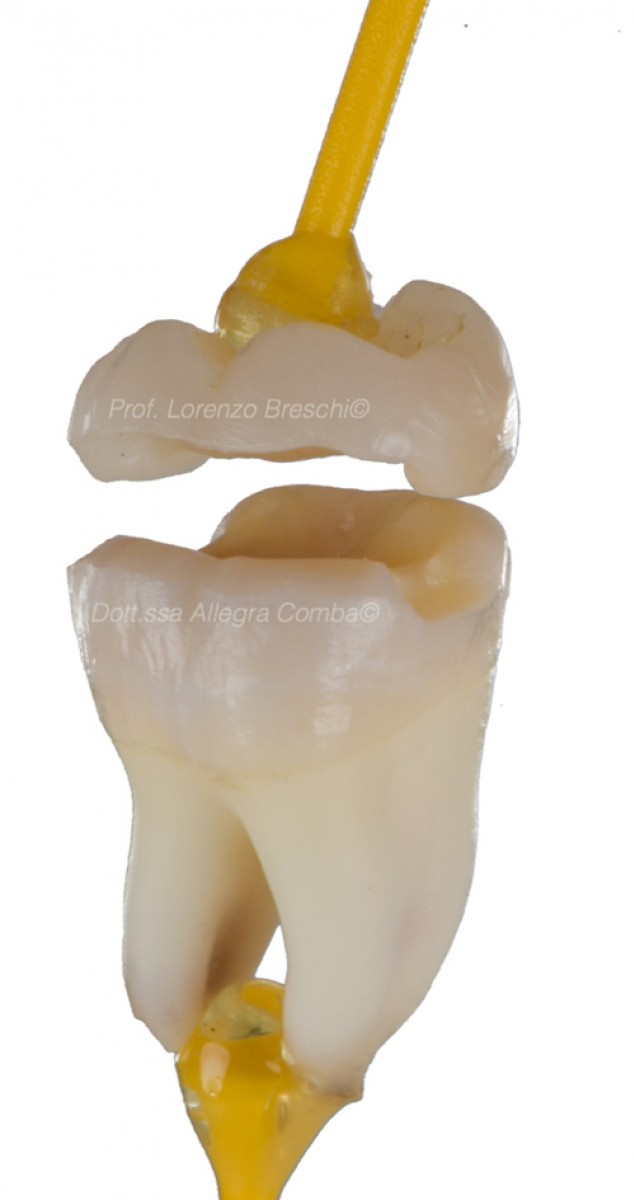
11 year outcomes of lithium disilicate onlays on patients with severe wear
Co-author: A. Comba
Lorenzo Breschi
The number of remaining teeth at an advanced age has increased significantly and there is a clear trend moving from traditional removable prostheses towards fixed and less invasive restoration. Today, abrasion, attrition, and erosion and their combinations are increasingly considered to be the major risk factors for the early loss of hard tooth structure and, consequently, the vertical dimension of the occlusion (VDO). In this context, it is of great interest for the clinicians to have data concerning duration of minimally invasive restorations on wear dentition.
The group of Edelhoff et al. from the University of Munich, Germany, conducted a prospective clinical study to analyze and compare the clinical performance with long-term survival and failure rates of lithium disilicate glass-ceramic occlusal onlays up to 11 years in vivo.
Materials and methods
The authors, conducted a prospective non-randomized clinical study on 7 patients (4 male, 3 female) treated with full mouth rehabilitation with a total of 103 adhesively bonded occlusal onlays made of lithium disilicate glass-ceramic (IPS e.max Press, Ivoclar Vivadent, Schaan,Liechtenstein). All restorations were examined during annual recall visits using periodontal parameters according to the modified United States Public Health Service (USPHS) criteria:(a) marginal discoloration, (b) secondary caries, (c) marginal integrity, (d) surface texture,(e) restoration fracture, and (f) occlusal wear, rating with Alpha, Bravo and Charlie over an observation period up to 11 years.
Results
During the observation period, lithium disilicate glass ceramic occlusal onlays presented a 100% survival rate. Four restorations within one patient (3.9%) presented marginal discoloration and one restoration (1%) showed a marginal crack formation. No biological complication,debonding or secondary caries could be found and tested periodontal parameters showed excellent results.
Conclusions
The research group of Edelhoff et al. concluded that monolithic lithium disilicate glass-ceramic restorations made with IPS e.max Press, Ivoclar Vivadent with a minimum layer thickness of 1 mm represent a reliable treatment option, even and especially if the VDO needs to be increased. However, since only one restorative material was examined they affirm that further studies with different materials may be useful.
For additional information: Clinical performance of occlusal onlays made of lithium disilicate ceramic in patients with severe tooth wear up to 11 year
 Read more
Read more
Editorials 10 October 2025
With proud smiles and crisp white coats, ninety-three learners from the DDS Class of 2029 and the International Dentist Pathway Class of 2028 marked the start of their dental careers at the UCSF...
Periodontology 10 October 2025
Continuous professional development (CPD) in Periodontology refers to the overall framework of opportunities that facilitate a life-long learning practice, driven by the learner-practitioner and...
TheraBreath, the #1 alcohol-free mouthwash brand in the U.S.*, has introduced a new line of dentist-formulated, clinically tested toothpastes designed to support professional oral care...
News 10 October 2025
New officers and trustees were installed at the Minnesota Dental Association’s Leadership Conference on September 19 in Minneapolis.
News 10 October 2025
Smartee Denti-Technology today announced that Professor Gang Shen, its Chief Scientist and Executive President of TaiKang ByBo Dental, has once again been named to the World’s Top 2% Scientists...










